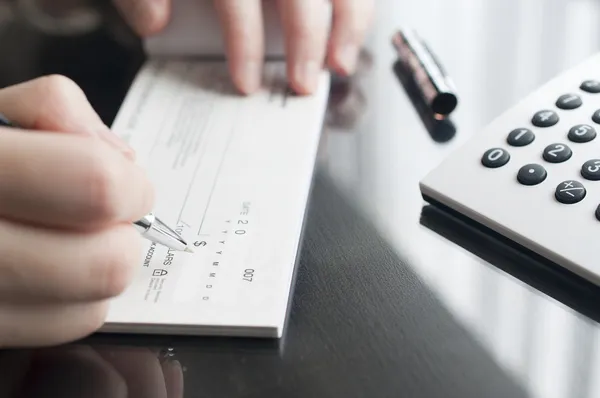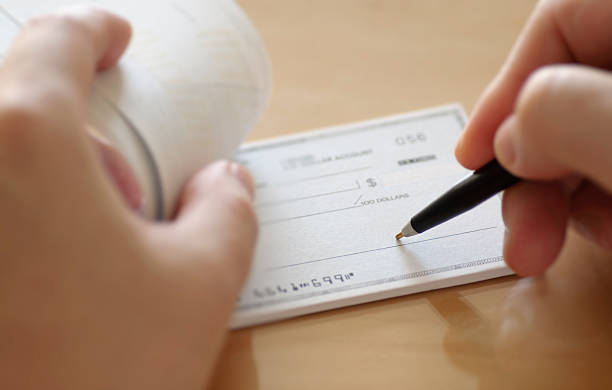What is a Check? History, Types & Usage
For centuries, checks have been an indispensable part of financial systems, serving as a fundamental method for securely transferring funds between individuals, businesses, and institutions. Their role in finance has been both practical and trusted, offering a reliable way to move money while ensuring accuracy and accountability. Despite the rise of digital payment systems that have drastically changed how transactions occur, checks still retain significant value, especially for those who prioritize a traceable, verifiable, and formal record of their payments.

What is a Check?
A check is a formal, written, dated, and signed document that serves as an instruction to a bank, directing it to pay a specific sum of money from the writer’s account to the individual or entity designated as the payee. Essentially, a check functions as a structured request for the bank to facilitate the transfer of funds from one account to another. The individual or entity issuing the check is called the drawer, while the recipient of the funds is known as the payee. People particularly esteem this method of payment for its inherent security features that help safeguard against unauthorized transactions.Furthermore, checks maintain a clear and verifiable paper trail, making them a preferred choice for a variety of transactions, including personal payments, business dealings, and payroll disbursements. By utilizing checks, both parties can ensure that the transaction is documented, fostering trust and accountability in financial dealings.
Purpose of a Check
The primary purpose of a check is to enable secure and accurate transfer of funds between individuals or entities. Whether used for personal expenses, business transactions, or payroll disbursements, a check provides a written record of the payment, which simplifies managing and tracking financial activities.For businesses, checks are a reliable means of paying suppliers, vendors, and employees. On a personal level, checks are often used to pay bills, send money as gifts, or make large purchases where cash may not be practical. The advantage of using checks lies in their ability to document the transaction, ensuring that both the payer and the payee can reference the payment for future record-keeping purposes.
Key Components of a Check
A check consists of several critical elements that you must fill out accurately to ensure proper and secure processing.
Date: The date shows when you wrote the check and is crucial for determining when you intend the payment to be processed. In some cases, you can post-date checks, which lets you specify a future date for withdrawing the funds. This feature can help ensure that sufficient funds are available in the account at that time, thereby preventing potential overdrafts.
Payee: The payee refers to the individual or business to whom the check is made payable. It is of utmost importance to write the correct name clearly and accurately. This precaution ensures that the funds go to the intended recipient, reducing the risk of complications or misunderstandings during the transaction process.
Amount: You must express the payment amount in two formats—numerical and in words. This dual representation serves to prevent any discrepancies or fraudulent activities that could arise due to misinterpretation of the amount written.
Signature: The drawer’s signature is a vital security feature that authorizes the bank to release the funds to the payee. Without the proper signature, the check cannot be processed, rendering it invalid.
Memo Line: The memo line provides space for the drawer to note the purpose of the payment. While not mandatory, this notation can serve as a helpful reminder for both the drawer and the payee regarding the reason for the check’s issuance, thus enhancing transparency and accountability in financial transactions.
Security Features of a Check
Modern checks are equipped with various security features designed to prevent fraud and ensure that funds are transferred correctly and efficiently.
Routing Number: The routing number is a nine-digit code that identifies the financial institution where you hold your account. This essential feature ensures that the check goes to the correct bank for processing.Each bank has its unique routing number, which allows the banking system to verify the institution’s identity quickly and accurately, thereby reducing the risk of errors during the payment process.
Account Number: After the routing number, the account number specifies which account you will draw the funds from. This unique identifier ensures that the money comes from the correct source, helping you avoid potential issues related to incorrect withdrawals.By clearly indicating the specific account, the check facilitates a seamless transaction, providing both the drawer and the payee with confidence in the payment process.
Check Number: Each check is assigned a unique number, which plays a crucial role in facilitating tracking and record-keeping. This sequential numbering system is particularly useful for maintaining accurate financial records, allowing individuals and businesses to monitor their transactions effectively. Additionally, the unique check number helps prevent duplicate payments, as each number corresponds to a specific transaction. Overall, these security features enhance the integrity of the check-writing system, instilling trust in both the drawers and payees during financial transactions.
History of Checks
The history of the check dates back thousands of years, originating in ancient civilizations and evolving significantly over time. Understanding the development of checks can provide insight into their continued relevance in today’s financial system.
Ancient Origins
You can trace the concept of a check back to ancient Babylonian and Roman cultures, where written orders allowed individuals to transfer funds between accounts.en accounts. These early forms of checks were similar in function to promissory notes, serving as a precursor to modern banking instruments. While the financial systems of that era were far simpler than today’s, the use of written orders to transfer wealth laid the groundwork for the development of checks as we know them.
20th Century Developments
The widespread use of checks began in the 20th century, as advances in printing technology and banking infrastructure made checks more accessible and secure. Banks standardized the format of checks, incorporating features like watermarks, special inks, and unique numbering systems to prevent fraud. Checks became a popular method of payment for individuals and businesses alike, driving commerce and facilitating the smooth exchange of money in an increasingly interconnected world.
Modern-Day Usage
In today’s digital age, checks have evolved to incorporate electronic processing systems that allow for faster and more efficient clearing of funds. While digital payments have grown in popularity, checks remain an important financial tool for those who prefer a tangible, written record of their transactions. Additionally, checks are still widely accepted in many sectors, particularly for larger transactions such as rent payments or business dealings.
Types of Checks
Different types of checks are available depending on the purpose of the transaction. Here are five common types:
- Personal Checks: Individuals issue personal checks from their bank accounts, typically using them for everyday expenses like paying bills or making purchases. Although they may not provide the same level of security as other checks, they offer convenience for routine financial activities.
- Business Checks: Businesses issue these checks from their accounts to make company-related payments, such as paying suppliers, vendors, or employees. Business checks often feature additional security measures, including the company’s logo and special security coding.
- Certified Checks: A bank guarantees a certified check. The bank verifies that the drawer has sufficient funds to cover the payment and sets aside that amount until the payee cashes the check, ensuring the payee receives the full sum.
- Cashier’s Checks: Unlike personal checks, a cashier’s check draws directly from the bank’s own funds rather than the drawer’s account.The drawer provides the bank with the funds, and the bank issues the check, making it highly secure and reliable.
- Payroll Checks: Employers issue payroll checks to compensate their employees. These checks provide detailed information about the employee’s earnings, taxes, and deductions, ensuring transparency and accuracy in wage payments.
How to Write a Check

Writing a check may seem straightforward, but it’s important to follow the correct steps to ensure that it is processed smoothly and without issues.
Date: Begin by writing the current date in the upper-right corner of the check. This date is essential as it indicates when the check was issued. If you wish to post-date the check for a future transaction, be sure to write that future date instead.
Payee: On the “Pay to the Order of” line, write the full name of the individual or business receiving the payment. It is crucial to ensure that the spelling is correct, as any inaccuracies may lead to delays or complications during processing.
Amount in Numbers: In the small box located to the right, write the exact amount of money you wish to pay in numerical form (e.g., $125.50).
Amount in Words: On the line directly below the payee’s name, write the payment amount in words to match the numerical amount (e.g., One Hundred Twenty-Five Dollars and Fifty Cents).
Memo: Optionally, include a brief note on the memo line to indicate the purpose of the payment, such as “Rent for October.”
Signature: Finally, sign your name on the line at the bottom right to authorize the payment, ensuring that your signature matches the one on file with your bank.
How Banks Process Checks
When a check is deposited, the bank scans it and sends the details through an electronic clearinghouse system. The payer’s bank receives the check information and verifies the funds before transferring the payment to the payee’s bank. This process, known as clearing and settlement, usually takes a few business days. Although most checks now undergo electronic processing, the steps involved protect all parties and confirm the legitimacy of the transaction.
Bounced Checks
A bounced check occurs when the writer’s account lacks sufficient funds to cover the payment. When this happens, the check is returned unpaid to the payee, and both parties may incur fees. The writer will often face an insufficient funds (NSF) fee, which can range from $25 to $35 or more, depending on the bank. In addition to financial penalties, bouncing checks can harm the writer’s credit score and may even result in legal consequences if the behavior persists.
Advantages and Disadvantages of Checks
Pros:
Record-Keeping: Checks provide a clear and detailed paper trail for tracking and documenting financial transactions. Each check includes essential information, such as the date, payee, and amount, making it easy to maintain accurate financial records. This documentation is particularly valuable during tax season or when auditing finances.
Security: Checks require a signature for authorization, which acts as a safeguard against unauthorized transactions. If you lose or have a check stolen, you can promptly cancel it to prevent potential misuse. This security feature gives both you, the drawer, and the payee peace of mind, knowing that no one can access the funds without proper authorization.
Post-Dating: Another advantage of checks is the ability to schedule future payments. By writing a later date on the check, you can ensure that the payment processes when sufficient funds are available in your account.This feature is particularly useful for budgeting and managing cash flow.
Cons:
Slow Processing: One notable drawback of using checks is that transactions can take several days to clear, which may delay the availability of funds for both the drawer and the payee. This lag time can be inconvenient in urgent financial situations.
Fraud Risk: Despite their security features, checks are still vulnerable to forgery and theft. It is essential to handle them with care to mitigate these risks.
Inconvenience: Finally, managing and writing physical checks can feel cumbersome compared to using faster digital payment methods.
Preventing Check Fraud
To prevent check fraud effectively, it is essential to use checks that come equipped with advanced security features, such as watermarks, micro printing, and special inks. These elements make it significantly more difficult for criminals to forge or alter checks, thereby enhancing their overall security.
When filling out a check, always ensure that you complete it in its entirety, using permanent ink to prevent any alterations. Leaving blank spaces can provide opportunities for fraudsters to manipulate the check, so it’s best to write “N/A” or draw a line through any unused areas.
Additionally, it is crucial to monitor your bank account regularly for any unauthorized transactions. By keeping a close eye on your account statements, you can quickly identify any suspicious activity. If you notice anything unusual, report it to your bank immediately to take the necessary steps to protect your funds and prevent further unauthorized use.
Alternatives to Checks

While checks remain a useful tool, many modern alternatives offer faster, more secure ways to make payments:
- Electronic Payments: Methods such as direct deposit, wire transfers, and online bill payments allow for instant, secure transfers of funds without the need for physical checks.
- Digital Banking: With the rise of mobile apps and managing finances has become more convenient and secure. These platforms often offer enhanced security features like encryption and bio-metric authentication, ensuring that your transactions are safe from fraud.
FAQs
What is a check in financial terms?
A check is a written, signed, and dated order directing a bank to pay a specified sum of money to a designated individual or entity.
What are the main types of checks?
The primary types of checks include personal checks, business checks, certified checks, cashier’s checks, and payroll checks.
Can a check be written for future payment?
Yes, by post-dating a check, the writer can schedule a future payment. However, it is up to the recipient’s bank to honor the date on the check.
What happens if a check bounces?
A bounced check occurs when there are insufficient funds in the writer’s account. Both you, as the writer, and the recipient may incur fees, and your credit score can suffer negatively.
How long does it take for a check to clear?
The clearing process for a check typically takes several business days, depending on the banks involved and the method of processing.


